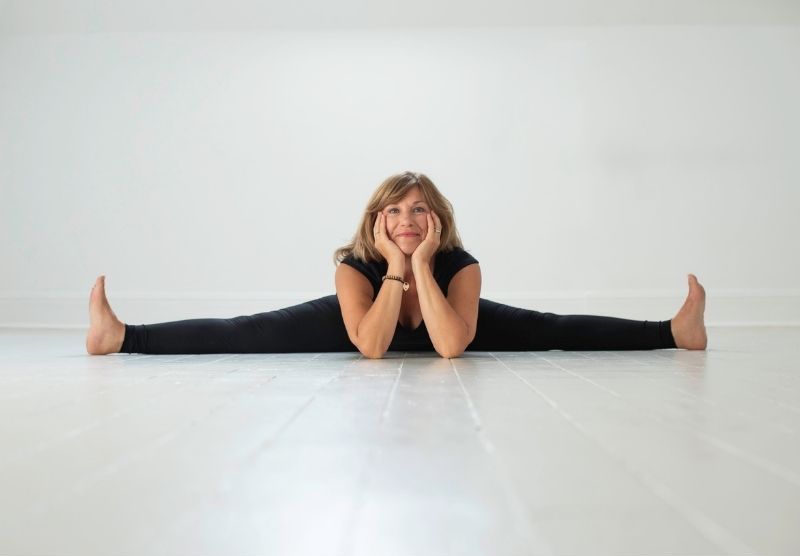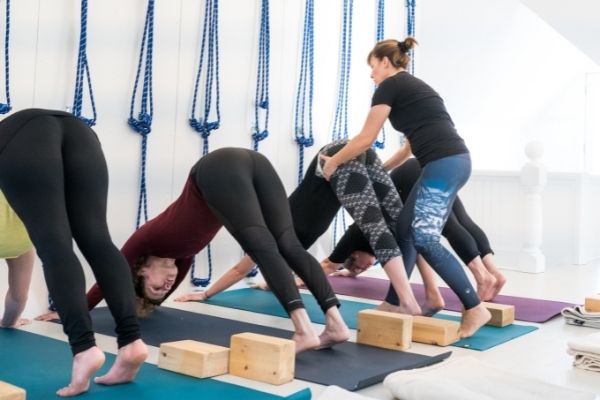Purposefully, I titled my blog posts as Musings From a Modern Yogi because, well, that is what I consider myself to be here in my little corner of North America that I call home. But what even is a modern yogi?
Well, in my case, it’s a yogi that takes the holidays seriously and doesn’t put out a blog post for the month of December! Sorry about that.
But seriously, the concept of yoga has changed significantly over the many decades, and centuries that it’s been available to humankind. There is no doubt that the classical yogis, the ancient practitioners, the ones that came before us, much, much before us, practiced yoga with an orientation on the mind.
Their goal, if you can forgive me for using that word, was to still the fluctuations of the mind through practice. To essentially transcend the mind. Therefore the ancient texts on Yoga say very little about asanas (poses) and a lot about practices that transcend the mind and what to be aware of when you are on this marga (path).
The term Asana literally means comfortable seat. And this is an important fact because quite literally, the practice of yoga was meant to get us into a state where we could sit comfortably for a long period of time and transcend the mind in order to identify with our own true self (and not our mind).
The Yoga Sutras of Patanjali is an ancient text that contains 196 terse aphorisms or threads that lay out the practice of yoga in four chapters. According to Barbara Stoler Miller’s translation of the Sutras (there are many) Sutra 1.3 states, “When thought ceases, the spirit stands in its true identity as observer to the world.” This means that through the stilling of the mind, the veils that cover us, that we hide behind (consciously or subconsciously) start to drop away to reveal our true selves to ourselves (to radiate in our own grandeur in BKS Iyengar’s terms).
“India is a land enriched by its ancient but ever fresh and flourishing culture. Although the country was ruled or misruled by foreigners for centuries, our people did not lose heart in their heritage. They had a firm conviction in their inner selves and a strong faith in their way of life, which protected them from cultural poverty. Facing calamities, they understood the meaning of life and passed on this heritage to posterity.”
BKS Iyengar, Astadala Yogamala, Volume 1
In the case of modern yogis, our focus is primarily on the body and health and wellness. Be that physical, mental, emotional or otherwise. I would argue that that is what most of us modern practitioners are drawn towards when we think about the subject of Yoga. Ideally, as we progress in our practice, we move beyond the physical towards the concept of transcending the mind. But in reality, a lot of us just stay in that physical realm. And even if we just do this, stay on the realm of the physical, we can benefit immensely from the practice of yoga.
I believe whether we strive for it or not there is a shift in the consciousness when we start to practice. We bring different things into our field of awareness. We start to learn how to pay attention to intangible things like the breath. We use props and supports to cultivate certain states of peacefulness, groundedness, calmness, so that we can rise above the push and pull of our mind’s wavelengths.
So, in a way, if we choose not to pay attention to the ancient teachings, the classical concepts and constructs of yoga, and only go for the physical health and wellness attributes of the practice, yoga has a way of just working on us.
“Yoga, an ancient but perfect science, deals with the evolution of humanity. This evolution includes all aspects of one’s being, from bodily health to Self-realisation. Yoga means union — the union of body with consciousness and consiousness with the soul. Yoga cultivates the ways of maintaining a balanced attitude in day-to-day life and endows skill in the performance of one’s actions.”
BKS Iyengar, Astadala Yogamala, Volume 1
That is, of course, not visible to the naked eye. It is what is referred to as the embodiment that occurs when we practice. It’s intangible, but we know after practice something has shifted. It may feel like our hamstrings are longer and it also may feel like we’ve reached a state of quiet that wouldn’t otherwise be available to us had we not done the practice.
We may or may not even discern those more subtle attributes as modern practitioners but I do believe, wholeheartedly, that they are there.
Practice is meant to make us sensitive through a deeper connection with the self via practice. These sensitivities will bring our awareness towards that space that resides within. That space that feels like home, that space that keeps us coming back to the mat even though, on the surface, we say it’s our tight hips or sore lower back or busy mind.
In Sutra 1.4 Patanjali states, “Otherwise, the observer identifies with the turnings of thought.” (Barbara Stoler Miller, Yoga Discipline of Freedom). Unfortunately, that is where most of us spend our time. Thinking that we are our thoughts, thinking that we are our mind, thinking that we have no control over the randomness of thoughts that pop into our head by the tens of thousands on a daily basis.
But if we pay attention and learn to draw our awareness inwards, we can start to get a glimpse of the Yoga that the classical yogis practiced and to understand more about a mind oriented approach to practice. It is then that we can glean a deeper meaning, a deeper understanding of this practice that, in its essence, was meant to transcend the fluctuations of the mind.
“Yoga is not tied to any religion. It is appropriate for all people in all locations. As yoga is concerned with the betterment of the life of each human being, it can be viewed as a universal religion and culture. Yoga alone is able to reach the richest and the poorest, the cities and the remotest countryside. No special place or paraphernalia are needed. Yoga requires only a will to practice, and an available space, in your own house, in which this can be done.”
BKS Iyengar, Astadala Yogamala, Volume 1




